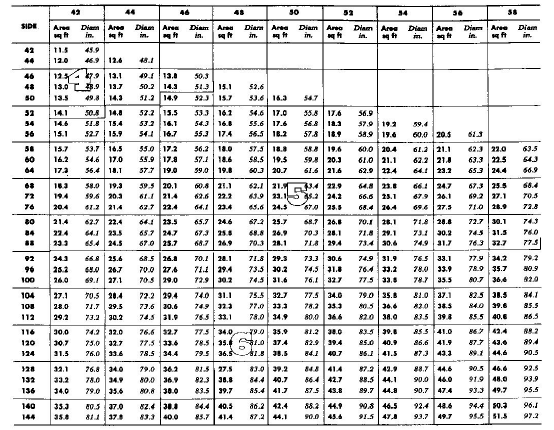

Unfortunately, Manual J doesn’t figure this in automatically. I have witnessed in cases where cutting the size in half when using spray foam works perfectly well. You can downsize HVAC equipment, which will save you money when purchasing and operating the equipment. With spray foam (because it is both an air seal and an insulation), it simply works better than other types of insulation. What Does HVAC Have to do With Spray Foam?

I can tell from experience that very few contractors do this. Manual D will tell you room by room correct sizing, layout and number of supply, and return duct work needed for proper air flow to each room. HVAC contractors also should be conducting a Manual D. While Manual J load calculations are important, they are only part of the process needed to have a comfortable home. So when you have an HVAC contractor use the “rule of thumb” method, he could be installing a system that is twice as big as required. In fact, by design Manual J will size heating systems by at least 110%. If the contractor is not asking about insulation types and levels or window types and sizes, it is likely that the load calculation are not very accurate.Īccording to, “Our experience has shown that typical air conditioner sizing generally results in cooling system over-sizing by about 40-50%.” This also rings true for heating systems. When taking bids form HVAC contractors, ask them to include the load calculations with their quotes. They go by a rule of thumb estimate that is not very accurate. Unfortunately, a large number of them never do. Your HVAC contractor should be completing these calculations when designing and choosing the equipment for your new home. This short video gives a good explanation why one size does not fit all:
Sizing hvac unit calculator software#
Many factors are key when sizing a unit, such as: insulation type and levels, window types, sizes and solar orientations, building air tightness, and many other things the software figures behind the scene automatically. The units will run longer or constantly run to meet the setting on the thermostat. You may notice this on really cold days or even really warm days. If the unit is too small, it will not produce enough heat to keep the building warm. Energy is thus being wasted every time you do this this also applies to air conditioning. Think about it this way: you have to warm up the inside of the furnace and all the duct work every time it comes on. Most furnaces should operate on a longer cycle. This does not allow the system to operate properly.

Having a furnace or air conditioner that is too large causes the furnace to “short cycle,” or run for a short time and produce a lot of heat quickly but then shut down. There are many third party software companies that make it very easy to complete this process, like Wright Soft and Elite Software. Remember – I did say it was a complicated process, but there is good news. ASHRAE, or the American Society of Heating, Refrigerating, and Air-Conditioning Engineers, includes the Manual J: a very detailed and designed manual to figure out how many BTU’s and tonnage is required for a particular building. Load calculations need to be done to meet ASHRAE Manual J specifications. It works the same way as air conditioning with tonnage. So let’s start with what it is and how it is done: HVAC sizing, or load calculations, determines the size or amount of BTU’s that a furnace needs to produce to work properly. It is not sexy, but it is a very important part of building a new home. Heating, Ventilation, and Air Condition (HVAC) is an extremely complicated process.


 0 kommentar(er)
0 kommentar(er)
